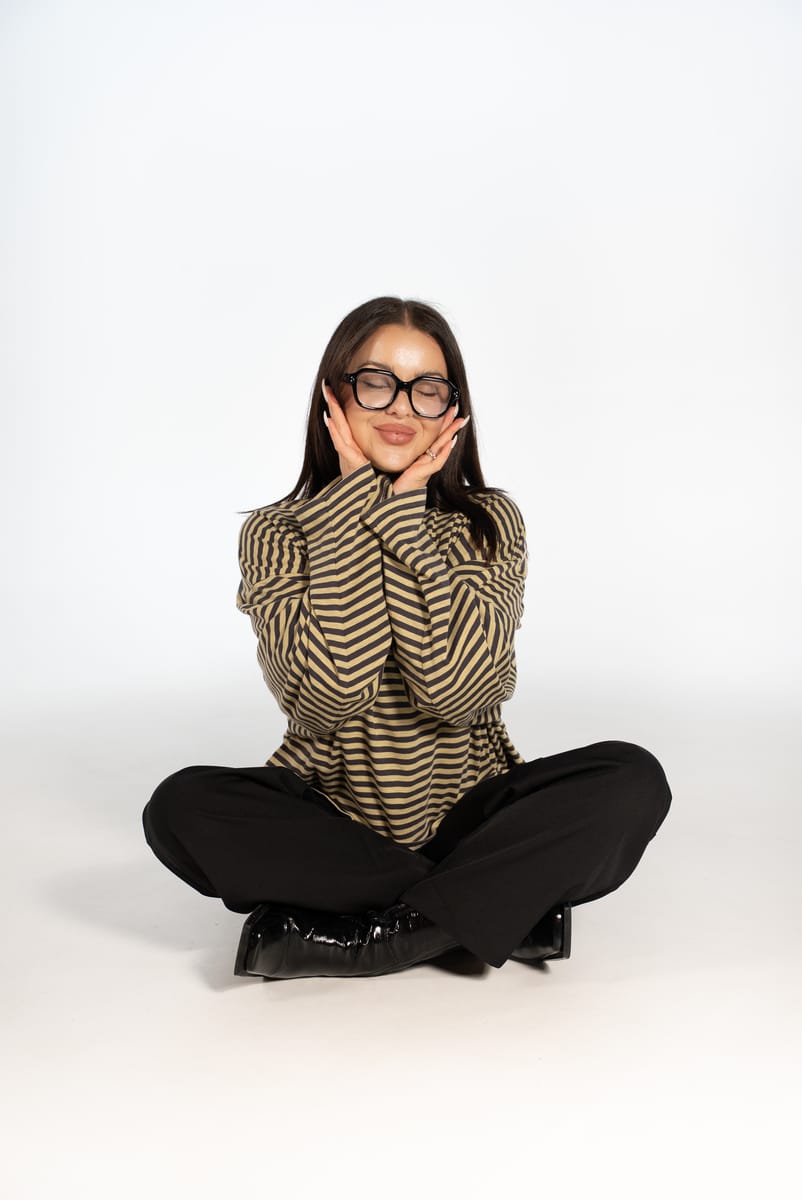
HiSmile's ads for their teeth whitening products made outrageous claims about their effectiveness. Although the Advertising Standards Authority found these claims to be misleading, the brand has survived by pivoting.
If you’re on TikTok, you’ve seen the ads.
An enthusiastic Australian dude running around with purple toothpaste, smearing it onto poor strangers’ teeth, bananas, lemons, and rubber ducks. Then he wipes it off and reveals a newly gleaming white surface.
And if you have half a brain, you know that sh*t is fake.
Social media has been reallll quiet since HiSmile stopped aggressively flooding our feeds with their questionable marketing. But there was a time when everyone, including my 9-year-old cousin, bought into the hype.
So, what happened?
The small Australian business started off strong. They converted their initial $20,000 investment into a $40 million business in their first 3 years. Founders Alex Tomic and Nik Mirkovic had no background in business.
What they did have was a product that filled a gap in the market. And they had a strategy that would propel their business to rapid success.
The LED teeth whitening kits, their first product to market, were a remarkable success. Mirkovic told CNBC in 2018 about their decision to enter the oral cosmetics space. They landed on the DIY kit, then 'made it beautiful,' said Tomic.
Then they sent the kit to micro-influencers with a following of 1,000 to 3,000 instead of those known for influencing for other brands. And that was the beginning of their winning influencer strategy.
Within 18 months, the duo made over $10 million AUS in sales.
They pumped that cash right back into marketing, targeting high profile personalities, like Conor McGregor. This resulted in a 5X return on ad spend as they reached over 14 million millennials.
In this era, Kylie Jenner was the golden ticket to marketing success. So, the duo got her on board, too. The business took off. So they expanded to flavoured toothpastes and purple colour-correcting treatments.
Cue the TikTok takeover.
When I say takeover, I mean it. You could not open TikTok without one of their creators yelling at you about how you 'NEED TO TRY their V34 Colour Correcting Serum.' Not only were these ads annoying, they were super misleading.
Take this video for example. It starts with one of the HiSmile staff dipping a yellow capsicum into purple paint. Then they wipe it off, revealing the capsicum has magically turned white.
They go on to explain 'colour theory' and how 'purple cancels yellow.' Then they show how their serum instantaneously whitens teeth.
Why is this misleading? Because neither the paint, nor the serum, can actually achieve those results.
Hundreds of these videos flooded Instagram and TikTok for months. (It's interesting to note that they're now marked with a ‘dramatisation’ warning.)
Over on Reddit, people weren’t buying the BS. 'Please don't believe their misleading content, save your money and spend it on real professional whitening,' one user wrote. 'I expected to wipe it off and see perfect whiteness compared to the rest. Nope. Just a minor purple stain that just goes away once you rinse.'
HiSmile's fall from grace.
I mean, someone was bound to complain right? And complain they did. So the ASA (Advertising Standards Authority) launched an investigation.
In the end, the ASA sided with the complaints (of course). They agreed the ads did not sufficiently support the claims of being clinically tested. This meant the brand was misleading consumers. So the ASA ordered the ads to not appear again in their current form.
What can we learn from this?
DON’T LIE?? Lol.
Okay, aside from the obvious, what happened here was a feedback loop of hype. This led HiSmile to maybe get a little carried away in exaggerating their product. Kind of like your grandad's fishing stories after a few too many beers.
Either that, or they literally just tried to scam us all. Either way, this serves as an important reminder that social media marketing is still advertising. And we have a responsibility to remain ethical in our practices.
My best advice? MAKE SURE YOU’RE ASA COMPLIANT. The rules are there to prevent misleading advertising. They cover things like accuracy, omission, and the ability to substantiate claims.
To keep you on the safe side, here’s ASA’s top tips:
Be upfront about terms and conditions. While it is common to have terms and conditions that qualify an offer, for example, a time or quantity limit, make sure this information is clear in the ad.
Qualifying text should be obvious and easy to read. You can use disclaimers, asterisked, footnoted or small print information to clarify a claim in an ad. But you can't use them to hide important information or to contradict the claims they qualify.
Make sure your pricing is clear. If you include price information, make it clear what is and isn't included.
Take care with exaggeration. Any claims you make about your product or service should be accurate and truthful. Obvious exaggerations that are unlikely to mislead are acceptable.
If you make a claim in an ad, you need to be able to support it with evidence, if challenged. If you can’t prove it, you can’t say it. The level of evidence needed depends on the type of product or service and the claim you're making. For example, some health claims may require clinical trials.
When you advertise the potential discounts available on your products or services, make sure they are genuine savings. Think about the overall impression consumers might take away from your ad. Is this what you are actually offering?
A happy ending for HiSmile
Despite the brand's fall from grace, they've rebuilt. Now, instead of championing their teeth whitening, they've pivoted to become a full-fledged oral care brand.
I guess that just goes to show, with the right strategy, a brand can bounce back from almost anything.
-Sophie, Copywriter
